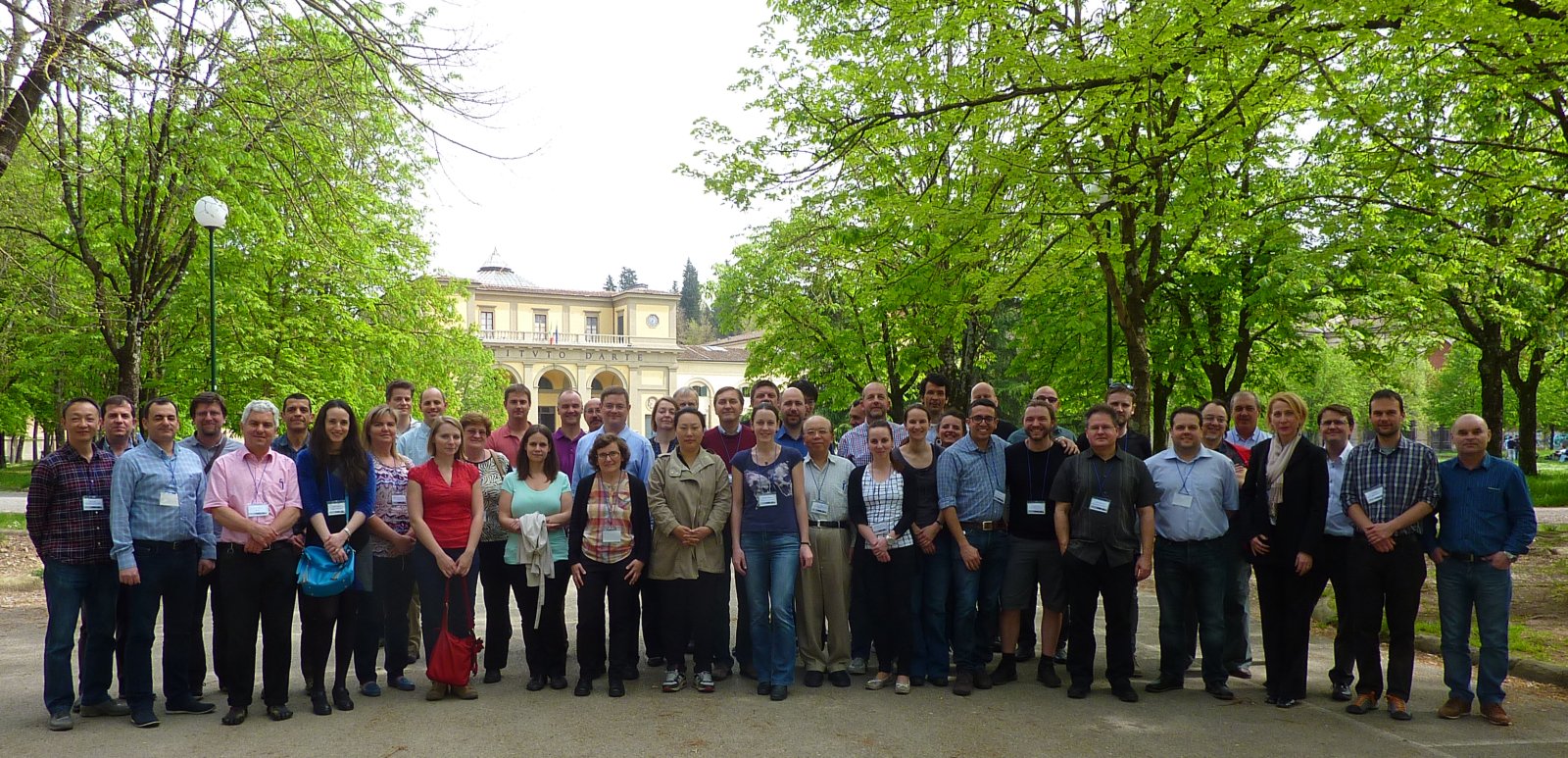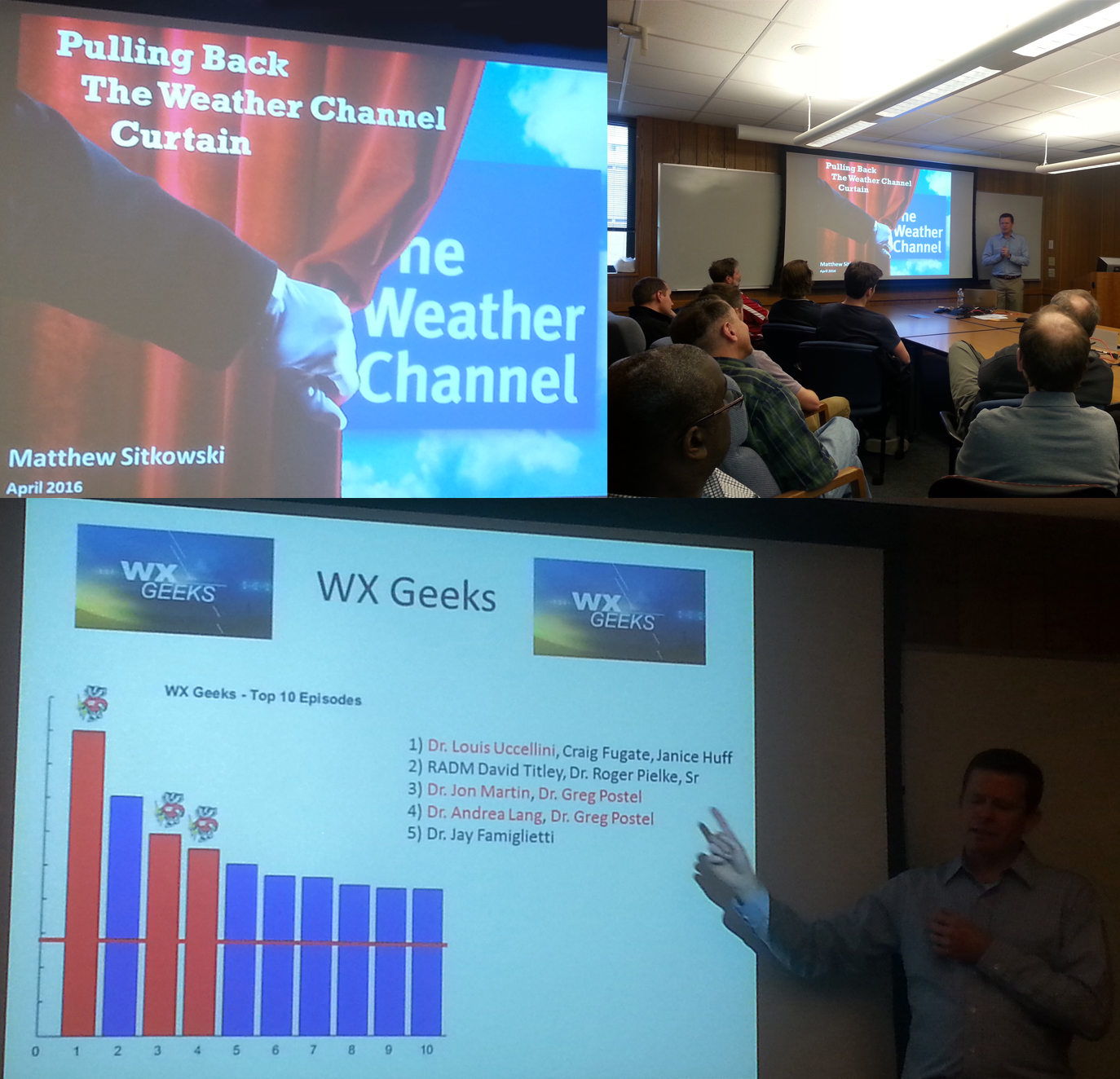
[ Archive ]

 |
CIMSS-NOAA Weekly Report
[ Archive ] |
 |
IN THE PRESS:
ITEMS FOR THE ADMINISTRATOR:
ITEMS FOR THE ASSISTANT ADMINISTRATOR:
ITEMS FOR THE OFFICE DIRECTOR, STAR:
Paper Published on Aerosol/Cloud Interactions: A recently published paper used cloud climate data records (CDRs) from Pathfinder Atmospheres Extended (PATMOS-x) and aerosol CDRs derived from PATMOS-x to conduct a multi-decadal analysis of the impact of aerosol on multiple cloud parameters for marine water-phased clouds. The analysis was able to show aerosol impacts on cloud optical depth, cloud particle size, cloud water path, and cloud fraction and found the results stratified into three distinct regimes. The authors are Xuepeng (Tom) Zhao of the NOAA Center of Environmental Information (NCEI), Andrew Heidnger (STAR) and Andi Walther (Cooperative Institute for Meteorological Satellite Studies, CIMSS). The citation for this work is Zhao, X.; Heidinger, A.K.; Walther, A. Climatology Analysis of Aerosol Effect on Marine Water Cloud from Long-Term Satellite Climate Data Records. Remote Sens. 2016, 8, 300. (A. Heidinger, E/RA2, 608-263-6757, andrew.heidinger@noaa.gov, A. Walther, CIMSS, andi.walther@ssec.wisc.edu)
CIMSS Leads Training Workshops in Honolulu: Three scientists from the Cooperative Institute for Meteorological Satellite Studies (CIMSS), Jordan Gerth, Scott Lindstrom, and Kathy Strabala, led two two-day workshops on the Advanced Himawari Imager (AHI) at the National Weather Service (NWS) forecast office and Central Pacific Hurricane Center (CPHC) in Honolulu, Hawaii, 11-15 April 2016. Most participants were NWS Honolulu meteorologists, though two were from the United States Navy-Air Force Joint Typhoon Warning Center (JTWC), and two others were from the Pacific International Training Desk at the University of Hawaii. The workshop participants used web applications and the Satellite Information Familiarization Tool (SIFT) that CIMSS developed to aid learning. NWS funded the workshops, and development of training materials related to tropical meteorology forecast challenges, to assure "day one" readiness of NWS staff in the central and western Pacific Basin. (J. Gerth, CIMSS, 608-263-4942)
ITEMS FOR THE DIVISION CHIEF, CoRP:
CIMSS Participation at 2016 European Convection Working Group: Wayne Feltz (SSEC/CIMSS), Ralph Petersen (SSEC/CIMSS) and Pao Wang (UW-Madison Faculty) attended the 4th European Convection Working Group in Florence, Italy April 4-8, 2016. Since the launch of the first Meteosat Second Generation (MSG) satellite in 2002, many of applications in the area of severe convective storm detection and nowcasting have been developed by various users. The focus of this working group is to establish a comprehensive inventory of the available applications in this field, with the aim to get deeper insight into the differences and commonalities of the available techniques and products, and their specific areas of application (http://www.essl.org/cwg/). Ralph Petersen presented “Background of various Convective Index options and how appropriate they are/will be for various sources of satellite soundings (e.g., SEVIRI vs. MTG-S vs. IASI)” and Wayne Feltz discussed “Progress on GOES-R/JPSS Convective Decision Support Research”. Dan Lindsey (NOAA/STAR/RAMMB) presented “Observing convection with the next generation of geostationary satellites: Himawari, GOES-R, and Meteosat Third Generation” which included an overview of GOES-14 1-minute mode examples. The main purpose of this working group is to share best practices using meteorological satellite data for convection nowcasting and decision support. There were 46 attendees from Europe, Japan, China, Korea, and South America. (W. Feltz, CIMSS/SSEC, 608-265-6283; R. Petersen, ralph.petersen@ssec.wisc.edu) (Click image to enlarge)
(Click image to enlarge)VISITORS:
National Weather Service Director Visits CIMSS and AOS: Dr. Louis Uccellini, National Weather Service (NWS) Director, visited the Cooperative Institute for Meteorological Satellite Studies (CIMSS) and the Department of Atmospheric and Oceanic Sciences (AOS) April 14-15, 2016. He met with many faculty, students, and the local NOAA group. Mike Pavolonis briefed Dr. Uccellini on the ProbSevere model, which was developed by NOAA/NESDIS/STAR in close collaboration with CIMSS. ProbSevere is a statistical model that determines the probability that a developing thunderstorm will produce severe weather up to 90 minutes in the future. ProbSevere is currently being utilized by 49 NWS Weather Forecast Offices and will be available to forecasters participating in the 2016 Hazardous Weather Testbed (HWT). The ability of ProbSevere to extend the lead-time of severe weather warnings was demonstrated for Dr. Uccellini. (M. Pavolonis, E/RA2, 608-263-9597, Mike.Pavolonis@noaa.gov)
Collaboration with China Meteorological Agency on Volcanic Ash: Dr. Lin Zhu from the China Meteorological Agency (CMA) National Satellite Meteorological Center is visiting the Cooperative Institute for Meteorological Satellite Studies (CIMSS). The primary goal of Dr. Zhu’s 1-year visit is to collaborate with Mike Pavolonis (NOAA/NESDIS/STAR) on satellite-based volcanic ash remote sensing, with a focus on applications relevant to China’s second-generation geostationary meteorological satellite (Feng Yun-4) and NOAA’s next generation Geostationary Operational Environmental Satellite (GOES-R). The collaboration between CMA and NOAA on volcanic ash remote sensing directly supports the NOAA-CMA Joint Working Group on Satellite Meteorology. (M. Pavolonis, E/RA2, 608-263-9597, Mike.Pavolonis@noaa.gov)
Weather Channel Seminar at CIMSS: On Wednesday April 13, Matt Sitkowski, producer for the Wx Geeks program on the Weather Channel, gave an invited seminar at the Cooperative Institute for Meteorological Satellite Studies (CIMSS) where he received his PhD from the Atmospheric and Oceanic Sciences (AOS) Department. Sitkowski's talk was titled "Pulling Back The Weather Channel Curtain" where he shared insights and anecdotes about working at the Weather Channel and producing the weekly Wx Geeks show, including the fact that the most watched Wx Geek episode featured NOAA's National Weather Service Director, Dr. Louis Uccellini, recently awarded the AOS Alumni Award for Outstanding Achievement. (M. Mooney, CIMSS, 608-265-2123, W. Feltz, CIMSS (608)265-6283)  (Click image to enlarge)
(Click image to enlarge)
Figure caption: Collage from the 4/13 Weather Channel presentation
NEXT WEEK:
LOOKING AHEAD:
| Archived Weeklies Page | Submit a report item |